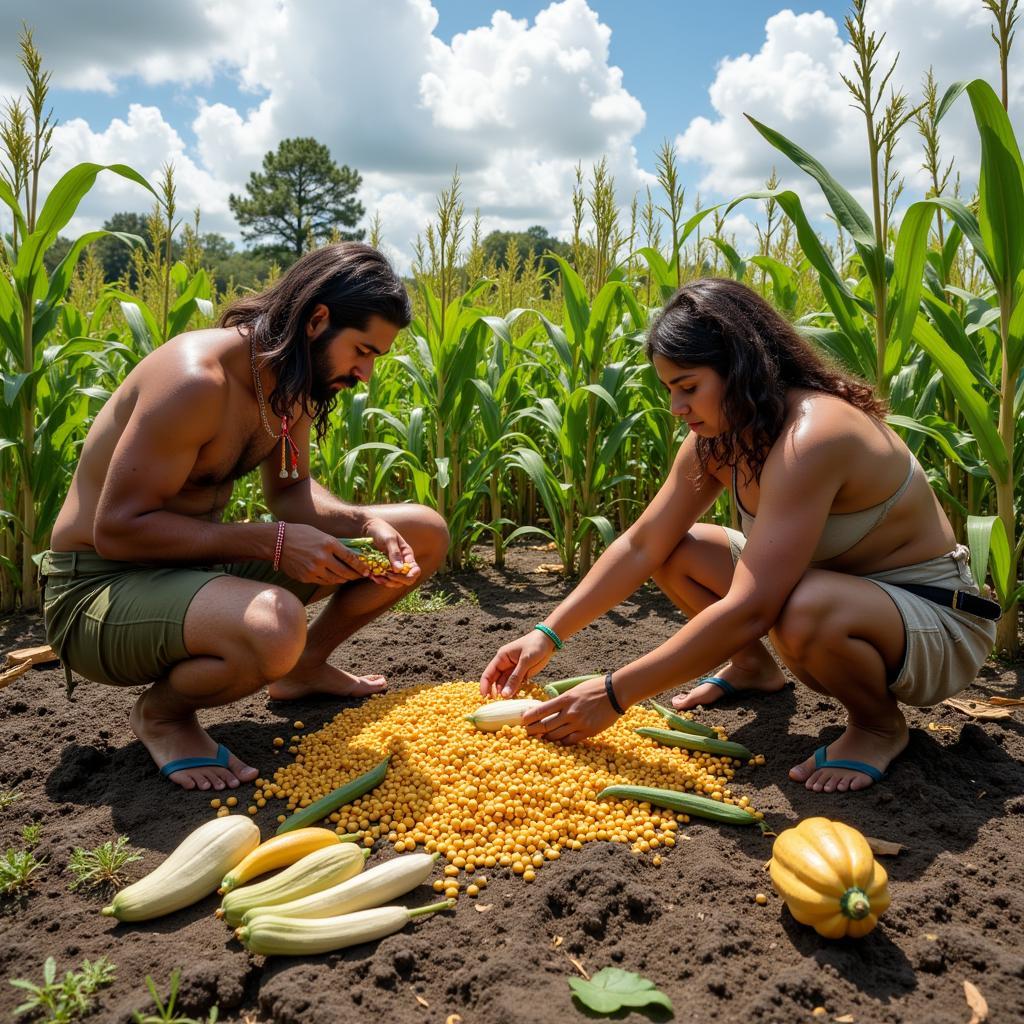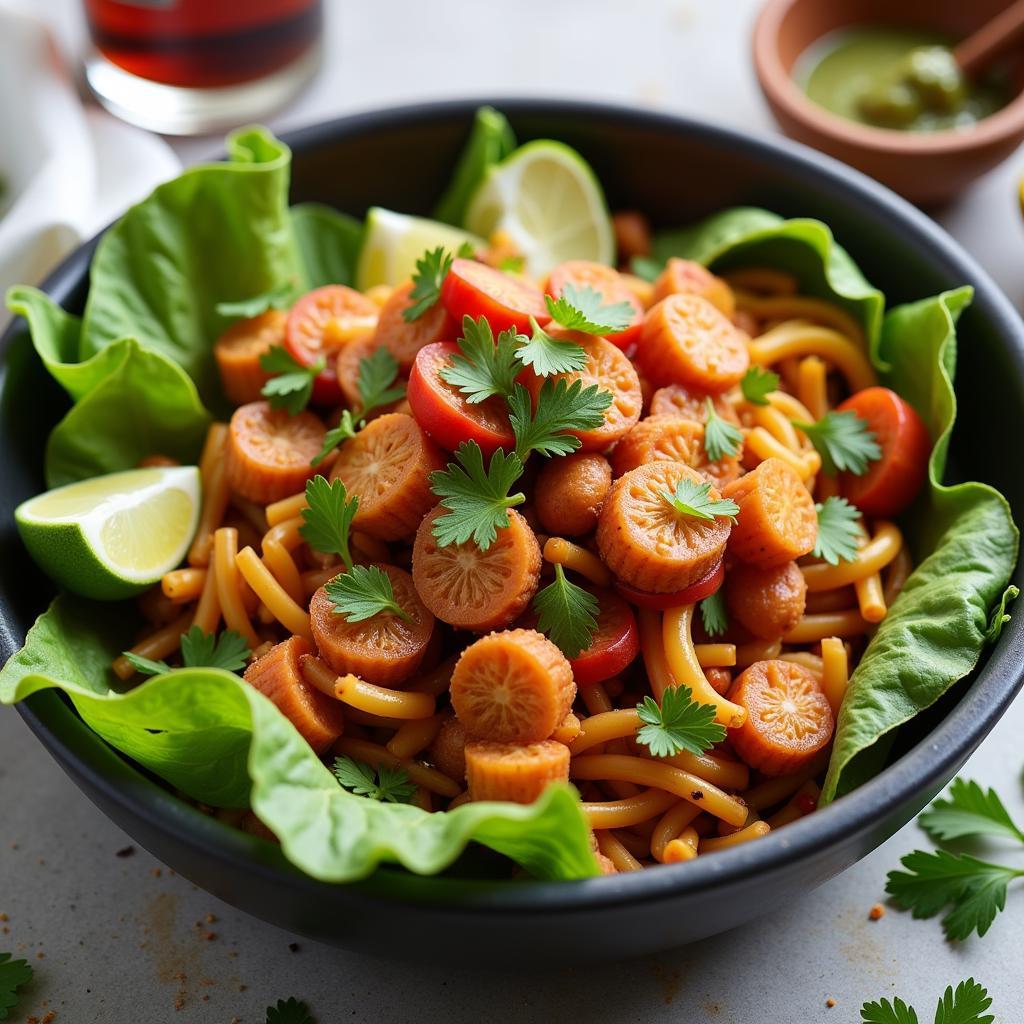Lumbee Tribe Food reflects a rich history intertwined with the land and its resources. This unique cuisine, passed down through generations, tells a story of resilience, adaptation, and a deep connection to their ancestral home in North Carolina. From traditional farming practices to cherished family recipes, Lumbee food offers a fascinating glimpse into the cultural heritage of this vibrant community.
A Taste of History: The Foundations of Lumbee Tribe Food
The Lumbee people have always been deeply connected to the land, and this connection is reflected in their cuisine. Historically, their diet was heavily reliant on what they could cultivate and gather, resulting in a cuisine rich in corn, beans, squash, and wild game. These staples formed the foundation of their meals, providing sustenance and contributing to the unique flavors of Lumbee dishes. Over time, as trade and interactions with other cultures increased, new ingredients and cooking techniques were incorporated, adding layers of complexity to their culinary traditions.
Traditional Lumbee cooking methods often involved slow cooking over open fires or in wood-burning stoves, allowing flavors to meld and deepen over time. This practice, while less common today, continues to be valued for its ability to produce dishes with a distinct smoky character. The knowledge and skills required for these traditional methods are often passed down within families, ensuring that these culinary traditions are preserved for future generations.
 Lumbee Tribe Traditional Farming Practices
Lumbee Tribe Traditional Farming Practices
Key Ingredients and Dishes in Lumbee Cuisine
Corn plays a central role in Lumbee tribe food, appearing in various forms, from cornbread and hominy to soups and stews. “If you’re talking about Lumbee food,” says culinary historian Amelia Locklear, “you’re talking about corn.” Collard greens, another staple, are often cooked with smoked meats, adding a rich, savory dimension to the dish. Wild game, including deer, rabbit, and squirrel, also features prominently in traditional Lumbee cuisine, reflecting their historical reliance on hunting.
One iconic Lumbee dish is collard sandwiches, a simple yet flavorful combination of stewed collard greens served between slices of cornbread. This dish exemplifies the resourcefulness of Lumbee cooking, using readily available ingredients to create a satisfying and nutritious meal. Another popular dish is Indian boiled dumplings, a type of thick, chewy dumpling often served with stewed meat or vegetables. These dumplings, also known as “hominy balls”, are a testament to the ingenuity of Lumbee cooks.
 Lumbee Tribe Collard Sandwiches on Cornbread
Lumbee Tribe Collard Sandwiches on Cornbread
What are some popular Lumbee dishes?
Some common Lumbee dishes include collard sandwiches, Indian boiled dumplings, and various corn-based dishes like cornbread and hominy. These dishes reflect the tribe’s historical reliance on readily available ingredients and their resourceful cooking techniques.
Where can I find authentic Lumbee food?
The best place to experience authentic Lumbee tribe food is at community gatherings and powwows held throughout the year in Robeson County, North Carolina. Local restaurants in the area may also offer some traditional Lumbee dishes.
The Future of Lumbee Food: Preserving Tradition and Embracing Innovation
While traditional methods and ingredients remain important, Lumbee cuisine continues to evolve. Modern Lumbee cooks are incorporating new techniques and ingredients while still honoring the core values of their culinary heritage. “The future of Lumbee food is about finding a balance,” says Chef Jackson Oxendine, “between preserving our traditions and embracing innovation.” This approach ensures that Lumbee cuisine remains vibrant and relevant for generations to come.
The growing interest in indigenous foodways has also provided opportunities for the Lumbee tribe to share their culinary traditions with a wider audience. Food festivals and cultural events offer platforms to showcase the unique flavors and stories behind Lumbee dishes, promoting cultural understanding and appreciation.
 Modern Lumbee Cuisine – Blending Tradition and Innovation
Modern Lumbee Cuisine – Blending Tradition and Innovation
Conclusion
Lumbee tribe food is more than just sustenance; it’s a celebration of heritage, resilience, and a deep connection to the land. From its humble beginnings to its modern interpretations, Lumbee cuisine continues to tell a compelling story of a vibrant and enduring culture. Exploring the culinary traditions of the Lumbee tribe offers a unique and enriching experience, providing a delicious glimpse into the heart of this remarkable community.
FAQ
- What is the main ingredient in most Lumbee dishes? Corn
- What are Indian boiled dumplings? Thick, chewy dumplings often served with stewed meat or vegetables.
- Where is the Lumbee tribe located? Robeson County, North Carolina.
- What is a popular Lumbee sandwich? Collard sandwiches.
- Where can I learn more about Lumbee culture? The Lumbee Tribe Cultural Center.
- What is a traditional Lumbee cooking method? Slow cooking over open fires or in wood-burning stoves.
- What is the significance of food in Lumbee culture? It represents heritage, resilience, and connection to the land.
For assistance, please contact us at Phone Number: 02437655121, Email: minacones@gmail.com, or visit us at 3PGH+8R9, ĐT70A, thôn Trung, Bắc Từ Liêm, Hà Nội, Việt Nam. We have a 24/7 customer service team.